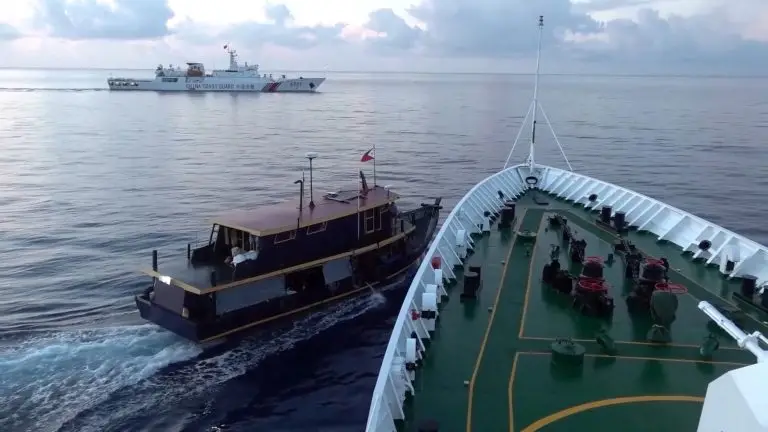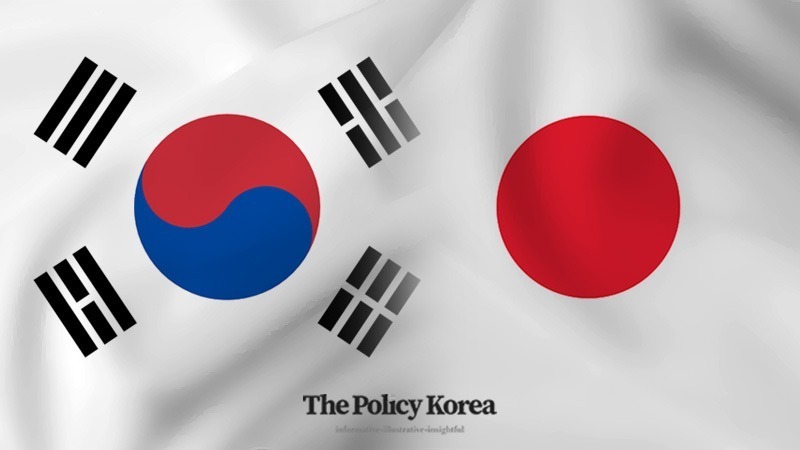[동아시아포럼] 中, 남중국해를 둘러싼 위계적 주권주의의 한계와 도전
中, 1940년 남해구단선 주장하며 남중국해 영토 분쟁 필리핀, 베트남 등 연안국 대응에 미국 정부 개입 주장 과거 중화사상 등 영향으로 주권국가의 위계구조 강조
[동아시아포럼]은 EAST ASIA FORUM에서 전하는 동아시아 정책 동향을 담았습니다. EAST ASIA FORUM은 오스트레일리아 국립대학교(Australia National University) 크로퍼드 공공정책대학(Crawford School of Public Policy) 산하의 공공정책과 관련된 정치, 경제, 비즈니스, 법률, 안보, 국제관계에 대한 연구·분석 플랫폼입니다. 저희 폴리시코리아(The Policy Korea)와 영어 원문 공개 조건으로 콘텐츠 제휴가 진행 중입니다.
지난 10월 22일(현지시간) 남중국해 세컨드 토마스 암초(Second Thomas Shoal·이하 암초) 인근 해역에서 중국 해안경비대 함정이 난파선 BRP 시에라 마드레에 주둔한 필리핀군 파견대에 식량과 보급품을 전달하기 위해 접근한 선박 두 척을 제지하는 과정에서 충돌사고가 발생했다. 이날 중국 해경은 민간 보급선과도 충돌을 일으킨 것으로 전해졌다.

세컨드 토마스 암초 인근 해역에서 중·필리핀 간 충돌 발생
그간 중국은 1940년대 남중국해 주변을 따라 자의적으로 U자 형태의 해상경계선인 ‘남해구단선’을 그어놓고 남중국해의 90%에 달하는 해역을 자국 영해라고 주장해 왔다. 중국은 오랜 기간 필리핀 등 연안국들과 영토 분쟁을 이어왔고, 이에 1999년 필리핀은 영토 분쟁이 있었던 암초 인근에 제2차 세계대전 당시 미군이 탱크 상륙용으로 사용했던 시에라 마드레함을 일부러 좌초시켜 시멘트, 철강, 케이블 등으로 모래톱에 고착시킨 후 필리핀군 파견대를 주둔시켰다. 이후 2016년 암초는 유엔해양법협약(UNCLOS에 따라 필리핀의 배타적 경제수역(EZZ)이자 대륙붕으로 인정받았지만, 중국군은 필리핀군 파견대의 철수를 요구하며 인근 수역을 봉쇄한 후 보급선의 접근을 막아왔다. 이번 사고도 중국군 함정이 필리핀 보급선의 접근을 막는 과정에서 발생했다.
그동안 암초 인근에서는 한 달에 한 번꼴로 해상 충돌이 발생했고 지난 10월에 발생한 충돌사고도 그중 하나에 불과하다. 이날 필리핀 보급선과 충돌한 함정은 중국 국영기업 산샤어업개발회사(Sansha Fisheries Development Company)가 운영하는 해양 민병대 선박 청산샤유00003(Qiong Sansha Yu 00003)호다. 필리핀과 중국 정부가 각각 공개한 동영상에는 중국 함정이 필리핀 보급선의 경로를 막았고 보급선이 중국 함정의 전면을 가로질러 피하려고 했지만 결국 충돌하는 장면이 담겼다. 또 다른 영상에서는 중국 해경 함정과 민간 보급선 간 발생한 두 번째 충돌도 확인할 수 있었다. 이날 충돌사고로 선체에 심각한 손상이 발생하지는 않았지만 양국 선박의 물리적 충돌은 이례적인 일이다.
중국 외교정책, 약소국의 주체성·독립성 인정하지 않아
이번 충돌사고와 사후 대응을 보면 위계적 주권 질서를 주장해 온 중국 외교의 특징을 확인할 수 있다. 역사적으로 동아시아의 강대국으로 군림해 온 중국은 필리핀 등 약소국과의 영토 분쟁에 있어 이들이 주권국가로서 주체적으로 대응할 권한과 역량이 있음을 인정하지 않는다. 다만 일각에서는 양소국들이 중국과의 분쟁에서 미국의 외교적 지원을 동원하기 위해 일부러 이같은 포지션을 연출하거나 혹은 미국이 세력 확장을 위해 중국과의 갈등을 의도했을 가능성이 있다는 분석도 있다. 실제 중국 정부는 약소국과 충돌이 발생했을 때 미국이 중국을 견제하기 위해 약소국을 선동했다거나 혹은 약소국이 미국과 협력해 불안을 조장하고 있다고 비난하는 사례가 많았다.
그동안 중국은 강대국과 약소국 간에는 힘의 차이가 엄연히 존재하며 이에 따라 국가 간 위계구조가 형성된다는 인식을 강조해 왔다. 지난 2010년 아세안 지역포럼(ASEAN Regional Forum)에서 중국 외교부장의 발언이 대표적인 사례다. 양제츠(Yang Jiechi) 당시 중국 외교부장은 싱가포르 외교부 장관 조지 여(George Yeo)에게 “중국은 대국이고 다른 나라는 소국”이라며 “이는 부인할 수 는 사실”이라고 말했다. 외교적 실언으로 기록된 해당 발언은 다른 나라의 주권보다 자국의 주권이 위대하다고 여기는 중국의 왜곡된 인식을 여실히 보여줬다.
약소국의 주체성과 독립성을 인정하지 않는 중국의 태도는 필리핀과의 분쟁에도 영향을 미쳤다. 지난 2013년 필리핀은 중국을 상대로 남중국해 분쟁에 대해 네덜란드 헤이그에 위치한 국제상설중재재판소(PCA)에 중재를 요청했고, 2016년 PCA는 중국이 남중국해 영토주권의 근거로 삼고 있는 남해구단선이 법적 근거가 없다고 판단하며 필리핀의 손을 들어줬다. 이에 당시 중국은 PCA의 결정에 미국과 일본이 개입했다고 비판했다. 이후에도 암초에서의 군사적 충돌에 대해 필리핀 정부가 이의를 제기하거나 강경 대응을 예고할 때마다 중국은 미국이 필리핀의 대응을 선동하거나 개입하고 있다고 주장하면서 문제의 본질을 무시해 왔다.
필리핀 “남중국해 분쟁, 강대국 간 경쟁으로 봐선 안 돼”
올해 9월 중국 해경 함정이 필리핀 선박과 거의 충돌할 뻔한 상황이 벌어졌을 때도 중국 정부의 대응은 다르지 않았다. 페르디난드 마르코스 주니어 필리핀 대통령은 사고 이후 열린 제26차 아세안·중국 정상회의에서 남중국해의 영토 분쟁은 미국·중국 등 강대국 간의 경쟁이 아니라 당사국 간의 주권 문제라고 강조했다. 이는 당시 리창 중국 총리가 개회 연설에서 “국가 간 갈등이 신냉전으로 비화되는 것을 막아야 한다”며 “각국이 분쟁에 대응하는 데 있어 편 가르기와 블록 대결, 신냉전에 반대하는 것이 매우 중요하다”고 말한 것에 대한 반박이다. 마르코스 대통령은 “남중국해 분쟁을 강대국 간의 전략적 경쟁이라는 시각으로 보는 것을 단호히 거부한다”며 “이는 우리 정부의 독립성과 주체성을 부정할 뿐만 아니라 우리의 정당한 이익도 무시하는 것”이라고 목소리를 높였다. 그러면서 “우리는 분쟁을 추구하지 않으며 주권에 대한 어떠한 도전에도 맞설 의무가 있다”고 역설했다.
지난해 취임한 마르코스 대통령은 미국과의 군사 동맹을 중요시하면서 중국과의 영토 분쟁에서 전례 없이 강경한 모습을 보이고 있다. 필리핀 정부는 지난 9월에 이어 불과 한 달 만에 분쟁지역에서 해상 충돌사고가 발생하자 “이번 충돌사고는 도발적이고 무책임하며 위법 행위로 선원들의 안전을 위협했다”며 중국을 강하게 비난했다. 이에 중국 신문 글로벌타임스(Global Times)는 미국이 남중국해를 휘젓는 도구로 필리핀이라는 막대를 이용하는 만평을 게재했다. 필리핀을 비롯한 동남아시아 국가들이 영토 분쟁에서 자국의 이익을 수호하기 위해 주체적으로 판단하고 대응할 것으로 생각하지 않는다는 중국의 입장을 노골적으로 드러낸 것이다. 그러나 중국 정부가 남중국해 연안국가들을 주권국으로서 예우하지 않고 왜곡된 인식으로 상황을 판단한다면 앞으로 더 많은 충돌과 위험을 초래할 공산이 높다. 더욱이 암초에서와 같이 중국의 군사적 도발이 계속될 경우 필리핀의 강경 대응 기조를 변화시키기 어렵기 때문에 국제정세의 위기로 번질 가능성도 배제할 수 없다.
중화사상에서 벗어나 주변국들을 동반자로 대우해야
중국의 외교정책에 영향을 미치는 주요한 요인 중 하나는 ‘국간 간에도 계층이 존재한다’는 중국 정부의 인식이고, 또 다른 하나는 ‘미국의 견제와 자국 고립’에 대한 우려다. 이 두 가지 요인이 결합하면서 중국 외교는 약소국을 무시하고 미국을 지나치게 경계하는 기조를 이어왔다. 역사적으로도 중국은 동아시아 지역에서 다른 나라에 비해 문화적·경제적으로 우위에 있으면서 주변의 약소국들을 복속시켰다. 이 때문에 중국의 지도자들은 인근 국가들이 과거 중국에 공물을 바치는 종속국이라는 중화사상이 아직도 남아있다. 또한 미국이 동아시아에서의 중국의 영향력을 약화시키고 나아가 중국 공산당을 붕괴시키기 위해 주변국을 동원해 중국을 견제하고 봉쇄하는 전략을 설계한 것으로 보고 있다.
이러한 인식은 1949년 중화인민공화국 창건 직후로 현재에 이르기까지 중국 정부가 국제정세를 바라보는 시각에도 큰 영향을 미치고 있다. 지난 3월 시진핑 중국 국가 주석은 “미국을 중심으로 한 서방 국가들이 모든 측면에서 중국을 견제하고 봉쇄하고 억압하고 있다”며 “이로 인해 중국은 전례 없는 도전에 직면했다”고 비판했다. 실제 바이든 행정부가 호주를 비롯해 인도, 필리핀까지 아시아태평양 지역의 국가들과의 우호적 관계를 강화하는 것은 외교적 책무라기보다는 중국을 견제하기 위한 목적이 강하다. 하지만 현대 외교에서 중국이 주변국의 우려와 불만을 합리적으로 수용하지 않는 것은 중국 외교의 한계로 지적되고 있다. 단, 중국이 현재와 달리 동아시아 국가들을 동반자로 대우하면서 공세의 속도와 방향을 조절한다면 오히려 미국의 인도-태평양 전략(Indo Pacific Strategy of US)이 어려움에 직면할 가능성이 있을 것으로 전망된다.
원문의 공동저자인 그렉 폴링(Greg Poling)은 워싱턴의 전략국제문제연구소(Center for Strategic and International Studies, CSIS) 선임연구원이자 프로그램 디렉터로 동남아시아 프로그램, 아시아 해양 투명성 이니셔티브 프로젝트 등을 수행하고 있습니다. 또 다른 공동저자인 주드 블란쳇(Jude Blanchette)은 CSIS 프리먼 체어 연구원으로 중국 연구를 수행하고 있습니다.

China’s disregard for small state agency hampers its foreign policy
On 22 October 2023, two separate collisions took place near Second Thomas Shoal, an underwater feature that an international tribunal in 2016 ruled is part of the Philippines’ exclusive economic zone and continental shelf. A China Coast Guard ship rammed a much smaller civilian vessel contracted by the Philippine Navy to resupply troops stationed aboard the BRP Sierra Madre.

In videos released by both sides, the coastguard vessel can be seen blocking the path of the resupply ship, which attempted to evade the vessel by crossing its bow and was struck. Separate videos show the second collision. The Qiong Sansha Yu 00003, a professional maritime militia vessel operated by China’s state-owned Sansha Fisheries Development Company, pulled alongside and then collided with a stationary Philippine Coast Guard ship. The incident appeared to involve no serious damage, and a second Philippine resupply vessel managed to reach the Sierra Madre. But these were just the most dangerous interactions in pattern of unsafe conduct that recurs monthly around Second Thomas Shoal.
The situation around Second Thomas highlights a key feature of China’s foreign policy — its refusal to acknowledge that the Philippines or other small states have their own agency in disputes with Beijing. This worldview was aptly summed up in a piece by the nationalist Global Times, which concludes ‘By escalating the tensions, the Philippines likely wants to draw support from the US, or the entire farce was staged by the US in the first place’.
When the Chinese leadership confronts a middle or small power that challenges or offends Beijing, they often accuse the smaller power of working in tandem with the United States or being used by the United States to drive an ‘anti-China’ strategy. This is the same sentiment with which Foreign Minister Yang Jiechi infamously shouted down Singaporean counterpart George Yeo at the 2010 ASEAN Regional Forum. ‘China is a big country and other countries are small countries, and that’s just a fact’, he said.
This sentiment is also the reason that Beijing sought to undermine the arbitration brought by the Philippines from 2013 to 2016 by insisting that it was engineered by the United States and Japan. And it is why after every Philippine diplomatic objection over the violence at Second Thomas, Chinese officials ignore the substance of the complaints and lecture their Filipino counterparts about being pawns in a US plot.
When another China Coast Guard vessel nearly collided with a Philippine ship in September 2023, Beijing read from this familiar script. President Ferdinand Marcos Jr. aired his frustrations at the annual ASEAN Summit that same week, saying that the Philippines rejected narratives of the South China Sea disputes that revolved around US–China competition. Marcos asserted that ‘this not only denies us our independence and our agency, but it also disregards our own legitimate interests’.
A month later, after the Philippines complained about another violent incident between itself and China, Global Times ran an editorial cartoon showing the Philippines as nothing more than a stick being used by the United States to stir up the South China Sea.
Beijing is not ready to acknowledge that Manila, or any other Southeast Asian claimant, has legitimate grievances that must be addressed to peacefully manage disputes. This increases the risks of escalation as Beijing seems to believe that other states are less committed to their sovereignty and rights, defy China only because of American interference and will eventually buckle in the face of sustained pressure. Running the same coercive play over and over at Second Thomas Shoal seems unlikely to change Philippine policy and so will only lead to further collisions and risk escalation.
There are two driving forces behind this forceful aspect of China’s regional foreign policy — Beijing’s vision of regional hierarchy and fear of US containment. In China’s long-embedded view of regional hierarchy, smaller states are historically and necessarily subservient to Beijing in the Asian pecking order. Long legacies of traditional tributary state relations with China, as well as the historical dominance of Chinese culture, language and economic power in the region, still linger in the minds of Chinese decisionmakers.
Chinese leaders also genuinely see the United States as an architect of a long-term containment strategy that seeks to undermine China’s regional influence or worse, to bring about the collapse of the Communist Party of China. This view, which dates to the years just after the founding of the People’s Republic of China in 1949, now colours much of Beijing’s thinking about its external environment. As Chinese President Xi Jinping stated in March, ‘Western countries led by the United States have implemented all-around containment, encirclement and suppression of China, which has brought unprecedented severe challenges to our country’s development’.
Beijing’s unwillingness to treat the concerns and grievances of its regional neighbours as legitimate has now become one of the most prominent challenges to its management of external relations. As US officials admit privately, the Biden administration’s progress in strengthening relations with countries across the region, from Australia to India to the Philippines, is less a story of diplomatic acumen and more one of Chinese truculence. Should Beijing adjust course and begin treating regional actors as partners, not irritants, the United States’ Indo-Pacific strategy may face its greatest challenge yet.



























